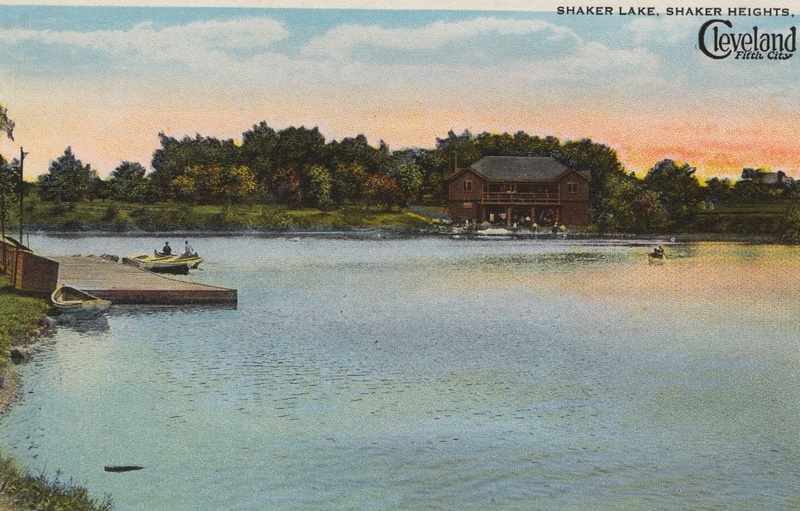Lower Shaker Lake

On a July night in 1921, a group of "Cleveland hoodlums" fought with members of the Shaker Heights Police Department after being ordered out of Lower Shaker Lake. The young men were not happy about being told that they could not swim in the lake at night. In the ensuing scuffle, the police beat a number of bathers and an officer fired his gun in the air. A few of the bathers made a run for it -- in the nude. One was eventually picked up by a Cleveland police officer on the alert for "a naked boy seen lurking in shrubbery on Kinsman Road." The North Union Shakers would have certainly been shocked to witness such a riotous scene.
During its 190 years of existence, Lower Shaker Lake has gone from being an example of industriousness and self-sufficiency to being a place where people go to have fun and enjoy nature. The North Union Shakers first dammed the Doan Brook in the 1820s to power a saw mill located just west of the newly-created Lower Shaker Lake. In 1829, a portion of the original Shaker settlement at Lee Road and North Park Boulevard moved to a location nearer to the sawmill and Lower Shaker Lake. The "Mill Family," as it became known, worked and lived communally, sharing the large "Family House" near the northwest shore of Lower Shaker Lake. The "Family" (actually a group of thirty or so mainly unrelated Shakers) operated the saw mill and, eventually, a five-story high grist (corn and flour) mill located in Doan Brook Gorge. As the 19th century came to a close, the North Union Shaker community steadily grew smaller. Older Shakers died, while new members proved hard to recruit, probably due to the strict practice of celibacy in the Shaker Church. In 1889, the North Union Shaker community disbanded, and the 20 or so remaining members moved to other Shaker communities. Their dams on the Doan Brook, however, remained.
In 1896, the Buffalo real estate company that now owned the old Shaker lands donated 279 acres of it, including Lower and Upper Shaker Lake, to the City of Cleveland. The new parkland followed the path of Doan Brook, connecting with Ambler Park, Wade Park, Rockefeller Park, and Gordon Park to create a nearly continuous stretch of parks from Shaker Heights to Lake Erie. Lower Shaker Lake quickly attracted swimmers, canoeists, and picnickers. In the 1910s and 1920s, when the Shaker Lakes Canoe Club was at its peak, its two-story clubhouse on the lake's southeast shore was the site of annual regattas that attracted thousands of spectators. The regattas featured traditional canoe races as well as competitions in the less well-known sports of "canoe tilting" and "canoe polo."
In the 1960s, however, the future of Lower Shaker Lake was threatened by a proposal to construct a freeway interchange just east of the lake. The Clark Freeway would have run parallel to the lake's south side before intersecting with the Lee Freeway near the spot where the Nature Center at Shaker Lakes now sits. Founded in 1966, the creation of the Nature Center was a key part of the dedicated effort by local residents to prevent the freeways from being built. Thankfully, the protests worked and the freeways did not get built. While the young men who dashed naked from the lake in 1921 did not win their fight against the police, the men and women fighting against the Clark and Lee Freeways several decades later won the right to continue enjoying the Shaker Lakes. It is safe to say that victory was deserved in both cases.
Audio
Images








